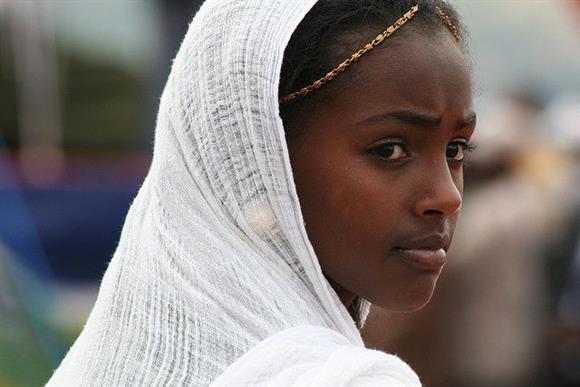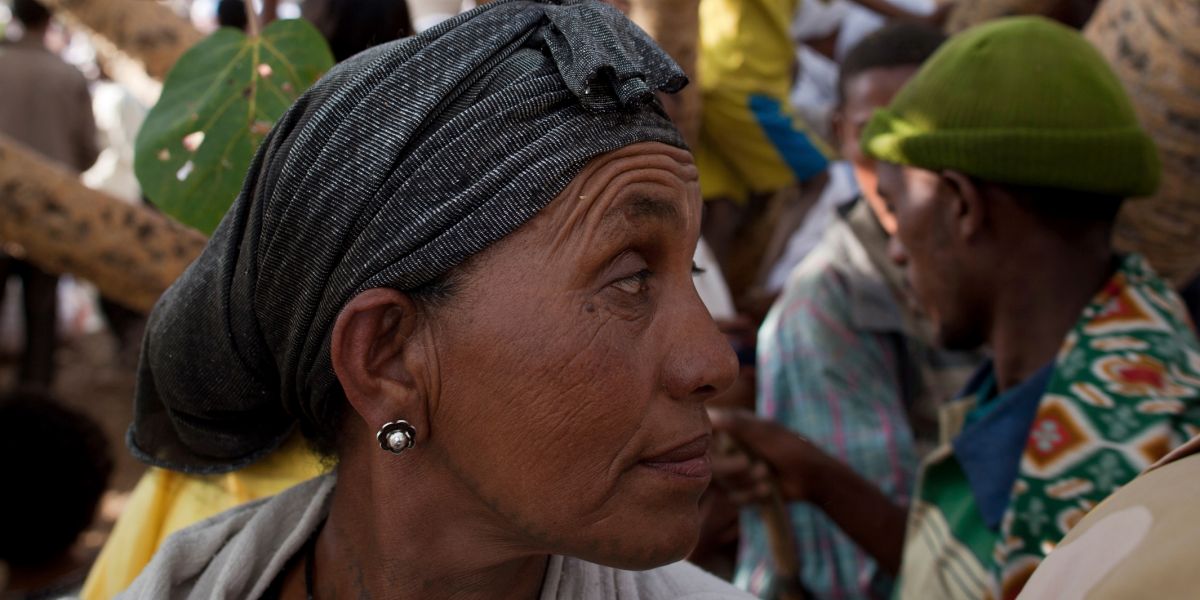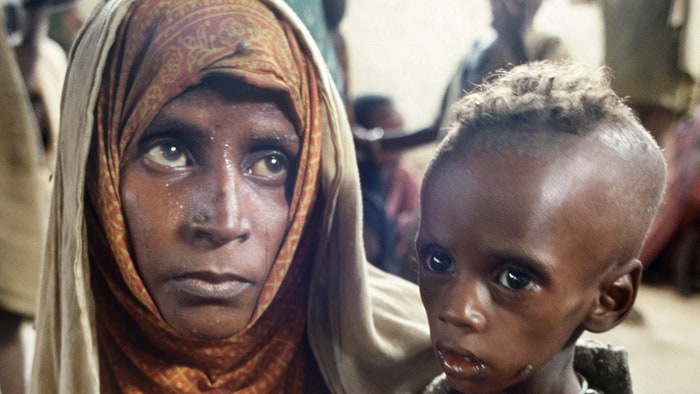Walta Ethiopia – against the feminisation of poverty
by Milena Rampoldi and Denise Nanni, ProMosaik.
In the following our interview with Addisie
Anshebo Executive Director of Walta
Mothers and Children Health Care Organization located in the Ethiopian capital
Addis Ababa. Addisie’s organization cares about mothers and children from poor
areas and struggle against violence against women. Domestic
violence is a form of brutality which is prevalent with women often being
beaten by their husbands; forced to have sex; and obliged to give birth against
their will. Women are consequently
frequently exposed to STDs and HIV/AIDS.
In the following our interview with Addisie
Anshebo Executive Director of Walta
Mothers and Children Health Care Organization located in the Ethiopian capital
Addis Ababa. Addisie’s organization cares about mothers and children from poor
areas and struggle against violence against women. Domestic
violence is a form of brutality which is prevalent with women often being
beaten by their husbands; forced to have sex; and obliged to give birth against
their will. Women are consequently
frequently exposed to STDs and HIV/AIDS.

Gender based violations are justified on the basis of
cultural traditions and biological differences including the socially
established roles and values ascribed to women. Such entrenched conventions
have to be challenged from every possible viewpoint because parents and the
community are generally unaware of children’s rights and girls/women’s rights
in particular. Religious and community leaders tend to protect traditional
healers and perpetrators rather than safeguarding the victims of such
misconstrued knowledge.
cultural traditions and biological differences including the socially
established roles and values ascribed to women. Such entrenched conventions
have to be challenged from every possible viewpoint because parents and the
community are generally unaware of children’s rights and girls/women’s rights
in particular. Religious and community leaders tend to protect traditional
healers and perpetrators rather than safeguarding the victims of such
misconstrued knowledge.
Despite the negativity of cultural traditions that promote
dominance over women, intervention by CSO and government organisations in this respect has so far
been very limited. Neither the victims
or perpetrators have the knowledge relating to the issues, nor do enforcement bodies possess
the experience or commitment to enforce the existing laws. Those women who
survive the violence have neither the knowhow and financial means to appeal to
law enforcement agents, nor access to legal
advice regarding their predicaments. Consequently numerous
cases of all forms of violence committed against women and girls are are
settled within the community and not reported to the police. The Women and
girls themselves are unaware of their rights and those cases actually
reported are not settled in time due to
cumbersome bureaucratic procedures and a low level of commitment from law
enforcement agencies.
dominance over women, intervention by CSO and government organisations in this respect has so far
been very limited. Neither the victims
or perpetrators have the knowledge relating to the issues, nor do enforcement bodies possess
the experience or commitment to enforce the existing laws. Those women who
survive the violence have neither the knowhow and financial means to appeal to
law enforcement agents, nor access to legal
advice regarding their predicaments. Consequently numerous
cases of all forms of violence committed against women and girls are are
settled within the community and not reported to the police. The Women and
girls themselves are unaware of their rights and those cases actually
reported are not settled in time due to
cumbersome bureaucratic procedures and a low level of commitment from law
enforcement agencies.
What are the problems that women and vulnerable
groups face in Ethiopia?
groups face in Ethiopia?
Ethiopia is among those African countries known for its
natural resources and yet has the lowest per capita income in the world. This
is manifested in the deprivation of millions of Ethiopians from the basic
necessities of life. The regular occurrence of severe draughts and /or food
insecurity problems have resulted in thousands of people fleeing to other towns
in the country. The high population density, the growing shortage of cultivable
land, the level of rapid environmental degradation etc., have caused a very low
standard of living for the people in those areas. A number of complex factors —
with economic problems being one of the fundamentals — include the following:
natural resources and yet has the lowest per capita income in the world. This
is manifested in the deprivation of millions of Ethiopians from the basic
necessities of life. The regular occurrence of severe draughts and /or food
insecurity problems have resulted in thousands of people fleeing to other towns
in the country. The high population density, the growing shortage of cultivable
land, the level of rapid environmental degradation etc., have caused a very low
standard of living for the people in those areas. A number of complex factors —
with economic problems being one of the fundamentals — include the following:

A. Problems that women face in Ethiopia:
Non-recognition of the contributions by women due to the
discriminatory rules and social attitudes in the country and the prevalence of
patriarchal society which always favours the value of men.
discriminatory rules and social attitudes in the country and the prevalence of
patriarchal society which always favours the value of men.
Politicisation of the concept and application of “gender and
development” in the country, including the abuse of affirmative actions by
white collars.
development” in the country, including the abuse of affirmative actions by
white collars.
Underserved from and overlooked by the various development
interventions carried out by both governmental and non-governmental organisations.
interventions carried out by both governmental and non-governmental organisations.
Limited efforts to balance the benefits that rural and urban
women have gained from the country’s development efforts.
women have gained from the country’s development efforts.
Feminisation of poverty, both in rural and urban
domains (limited access to land, cattle, education, healthcare services, and
leadership roles).
domains (limited access to land, cattle, education, healthcare services, and
leadership roles).
Biased legal instruments (both modern and customary laws)
that bar women’s access to resources, paid labour markets, formal business
activities, and from having a significant say in broader decision making.
that bar women’s access to resources, paid labour markets, formal business
activities, and from having a significant say in broader decision making.
Gender blind legal procedures which treat both women and
men, in front of the court, with similar articles and other considerations
without taking in to account the cultural and other personal
realities/backgrounds of women.
men, in front of the court, with similar articles and other considerations
without taking in to account the cultural and other personal
realities/backgrounds of women.
Limited social, political and economic participations in the
country in relation to women.
country in relation to women.
migration
B. Problems that vulnerable groups face in
Ethiopia:
Ethiopia:
(“Vulnerability” is defined as “…the exposure to
uninsured risk leading to a socially unacceptable level of well-being”).
uninsured risk leading to a socially unacceptable level of well-being”).
Stunted growth
due to malnutrition
due to malnutrition
Poor quality education (low human capital
development, poor quality education, and low attainment)
development, poor quality education, and low attainment)
Unemployment, underemployment, and low
wages/pension coverage, accompanied by informal migration and disparate
journeys.
wages/pension coverage, accompanied by informal migration and disparate
journeys.
Inactivity, violence, substance abuse, etc.
Poor housing and lack of basic infrastructure.
How do you select the
communities where you intervene?
communities where you intervene?
Consultation with community representatives (influential
persons and elderly)
persons and elderly)
Consultation and formal communications with government
agencies.
agencies.
Referring to previous reports (from research studies,
project reports, government reports).
project reports, government reports).

How do you promote community
empowerment?
empowerment?
Through the provision of primary health care and improving
the living standard of the poor in collaboration with government, religious
leaders, mixed professionals, donors, private sectors and the community at
large to improve the health status of the poor mothers and children in
Ethiopia.
the living standard of the poor in collaboration with government, religious
leaders, mixed professionals, donors, private sectors and the community at
large to improve the health status of the poor mothers and children in
Ethiopia.
Some of the activities are:
Providing capacity building training.
Promoting community and indigenous leadership
skills.
skills.
Facilitating economic strengthening support
(entrepreneurship, access to revolving funds, saving and loan services).
(entrepreneurship, access to revolving funds, saving and loan services).
Support the establishment of community and
religious based institutions and organising local groups
religious based institutions and organising local groups
Support mass-media coverage in community
initiatives (information dissemination and awareness raising).
initiatives (information dissemination and awareness raising).
To strengthen and capacitate Civil Societies
& Community based organisations in different dimensions to enhance their
anti-poverty efforts.
& Community based organisations in different dimensions to enhance their
anti-poverty efforts.
To empower marginalised and poor girls, and
children through social and economic interventions of basic services.
children through social and economic interventions of basic services.
To enhance active citizen participation so as to
include marginalised community groups in the overall promotion of poverty
reduction movement among poor girls and children.
include marginalised community groups in the overall promotion of poverty
reduction movement among poor girls and children.
What are the main reasons that
lead to a lack of access to education and how do you promote it?
lead to a lack of access to education and how do you promote it?
a. Reasons that
lead to a lack of access to education
lead to a lack of access to education
Distance of education centres (schools) from the
dwelling areas of students.
dwelling areas of students.
Low quality school infrastructures.
Capacity limitations among teachers.
Negative attitude of parents towards their
children’s school attendance with priority being given to performance of
in-home tasks, farming activities, cattle herding,
etc.
children’s school attendance with priority being given to performance of
in-home tasks, farming activities, cattle herding,
etc.
Early marriage among girls.
Unaffordable cost for higher education.
Factors like harmful traditional practices, low
socio economic status, low education literacy of females, gender based
violence, unintended pregnancy and early marriage are impacting negatively on
the health status of women.
socio economic status, low education literacy of females, gender based
violence, unintended pregnancy and early marriage are impacting negatively on
the health status of women.
Mostly associated with the absence or poor
quality sexual and reproductive health knowledge, limited financial capacity of
households, and scarce accessibility to services.
quality sexual and reproductive health knowledge, limited financial capacity of
households, and scarce accessibility to services.
b. How to promote access to education:
Free but compulsory primary education for children.
Install life skill programs alongside formal education.
Incorporate gender sensitive curriculum.
Decentralised, inclusive and non-restrictive educational
planning which can entertain cultural and geographic variations.
planning which can entertain cultural and geographic variations.
Teachers development programs.
Updating and upgrading syllabi and instructional materials.
Do you cooperate with local
authorities and institutions? If yes, how?
authorities and institutions? If yes, how?
Yes, we cooperate with local authorities and institutions
in:
in:
Referral and linkage of services and beneficiaries.
Beneficiaries selection.
Planning of interventions.
Evaluation of projects.
Resource mobilisation works.


